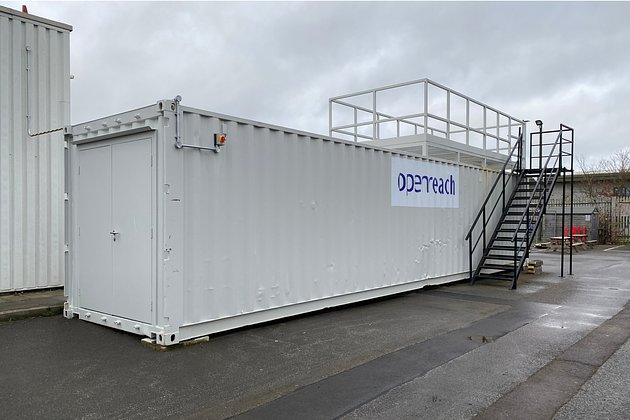In the dynamic world of catering and hospitality, the choice of containers is more than just a logistical decision; it's a critical element that can significantly impact the quality, presentation, and sustainability of services. From elegant dinner parties to bustling corporate events, the right containers can elevate the dining experience and ensure that food is served safely and efficiently. This article delves into the various types of containers used in the catering and hospitality industry, their benefits, and the considerations that go into selecting the perfect container for each occasion.

The Importance of Catering and Hospitality Containers
Catering and hospitality containers serve multiple purposes, from maintaining food quality and temperature to enhancing the overall dining experience. Here are some key reasons why these containers are essential:
- Food Safety and Hygiene: Proper containers prevent contamination and ensure that food remains fresh and safe to consume.
- Temperature Control: Containers that maintain the right temperature are crucial for keeping hot foods hot and cold foods cold.
- Presentation: The right container can enhance the visual appeal of the dish, making it more inviting and appetizing.
- Portability: For off-site catering, containers that are easy to transport and stack are essential.
- Sustainability: Eco-friendly containers are becoming increasingly important as the industry moves towards more sustainable practices.
Types of Catering and Hospitality Containers
The catering and hospitality industry uses a wide variety of containers to meet different needs. Here are some of the most common types:
Plastic Containers
- Pros: Lightweight, durable, and cost-effective.
- Cons: Can be perceived as less eco-friendly and may not be suitable for high-temperature foods.
- Common Uses: Takeout, buffet services, and casual events.
Metal Containers
- Pros: Durable, heat-resistant, and can be reused.
- Cons: Heavier and more expensive.
- Common Uses: Fine dining, gourmet catering, and events requiring high-temperature food service.
Glass Containers
- Pros: Elegant, reusable, and microwave-safe.
- Cons: Fragile and heavier.
- Common Uses: High-end events, gourmet catering, and presentation dishes.
Paper and Cardboard Containers
- Pros: Eco-friendly, lightweight, and cost-effective.
- Cons: Not suitable for wet or oily foods and may not provide adequate temperature control.
- Common Uses: Takeout, casual events, and eco-conscious catering.
Biodegradable Containers
- Pros: Environmentally friendly and compostable.
- Cons: Can be more expensive and may not be as durable as other materials.
- Common Uses: Eco-friendly events, outdoor gatherings, and sustainable catering.
Insulated Containers
- Pros: Excellent for maintaining temperature, ideal for long-distance transport.
- Cons: Can be bulky and more expensive.
- Common Uses: Off-site catering, long-duration events, and food delivery services.
Factors to Consider When Choosing Containers
Selecting the right container for your catering or hospitality needs involves several considerations:
- Type of Food: Consider the nature of the food being served. For example, wet or oily foods may require different materials than dry or solid foods.
- Event Type: The type of event can influence the choice of container. Formal events may call for more elegant options, while casual events can use more practical and cost-effective choices.
- Temperature Requirements: Ensure that the container can maintain the required temperature for the duration of the event.
- Portability and Storage: For off-site catering, choose containers that are easy to transport and store efficiently.
- Aesthetic Appeal: The container should complement the overall theme and presentation of the event.
- Sustainability: Consider the environmental impact of the container and opt for eco-friendly options when possible.
Best Practices for Using Catering and Hospitality Containers
To ensure the best results and maintain high standards of service, follow these best practices:
- Proper Storage: Store containers in a clean, dry place to prevent contamination and damage.
- Temperature Control: Use insulated containers for hot and cold foods to maintain the desired temperature.
- Labeling: Clearly label containers with the contents, preparation date, and any allergen information.
- Presentation: Choose containers that enhance the visual appeal of the food and match the event's theme.
- Sustainability: Opt for reusable or biodegradable containers to reduce environmental impact.
- Quality Control: Regularly inspect containers for any signs of wear or damage and replace as needed.
FAQs
Q: What are the most eco-friendly container options for catering and hospitality?A: Biodegradable containers made from materials like bamboo, sugarcane, and cornstarch are excellent eco-friendly options. They are compostable and have a lower environmental impact compared to traditional plastic containers.
Q: How can I ensure that my food stays at the right temperature during transport?A: Use insulated containers designed to maintain temperature. For hot foods, pre-heat the containers before filling them. For cold foods, use ice packs or gel packs to keep the temperature low.
Q: Are there any regulations for the use of containers in the catering and hospitality industry?A: Yes, there are food safety regulations that must be followed, such as those set by the Food and Drug Administration (FDA) in the United States. Containers must be food-safe, non-toxic, and compliant with hygiene standards.
Q: Can I use the same container for different types of food?A: It is generally not recommended to use the same container for different types of food, especially if the foods have different temperature requirements or if there are potential allergens. Always clean and sanitize containers thoroughly between uses.
Q: What are some creative ways to use containers to enhance the dining experience?A: Consider using unique and decorative containers to add a touch of elegance or fun to your event. For example, serving desserts in small glass jars or using wooden boxes for appetizers can create a memorable dining experience.
Catering And Hospitality Containers (https://cogcontainersltd.com/) play a crucial role in the success of any event or service. By understanding the different types of containers available and the factors to consider when choosing them, professionals in the industry can ensure that their food is served safely, efficiently, and with the highest quality. Whether it's a formal dinner party or a casual outdoor event, the right container can make all the difference in creating a memorable and enjoyable dining experience.




